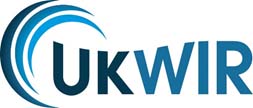Project name:
Composition, Distribution, Sources and Ecological Interactions of Micro- and nanoplastics in the Southeastern Black Sea Ecosystem” funded by The Scientific and Technological Research Council of Turkey (TUBITAK)
Project description:
This project aims to assess seasonal distribution, composition, abundance of micro- and nanoplastics in sea surface, water column and sediment with their possible sources in the Southeastern Black Sea which represents an important fisheries area. River mouth and coastal areas as representative areas of land-based pollution are investigated in spatial and temporal scale. This project also aims to investigate possible pathways of micro- and nanoplastics to enter food web and their effects on function of lower trophic levels of pelagic food funded by The Scientific and Technological Research Council of Turkey (TUBITAK) web. Effect of physical environment on distribution of plastics are also evaluated. Project will provide data to fill the gap on micro- and nanoplastics and their effects in Black Sea ecosystem within the scope of EU Marine Strategy Framework Directive which aims to achieve Good Environmental Status in European Seas.
Project name:
“Assessment of microplastic ingestion by zooplankton in the South Eastern Black Sea“
Project description:
This project aims to assess the microplastic ingestion by two dominant copepod species (Calanus euxinus and Acartia clausi) in the Black Sea. Temporal and spatial distribution of microplastics concentration and those of zooplankton groups in the water column were also evaluated.
Project name:
Assessment of riverine input of microplastics in the South Eastern Black Sea
Project description:
This project aims to assess microplastics input by a selected river in the SE Black Sea.


 Project name:
Project name:


